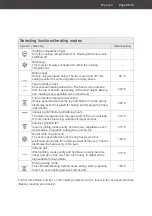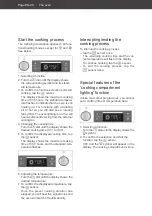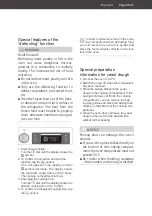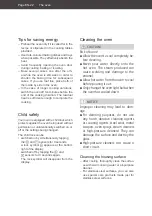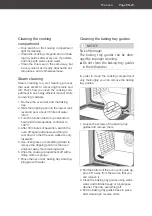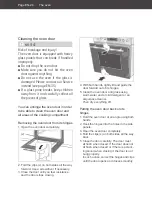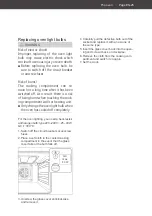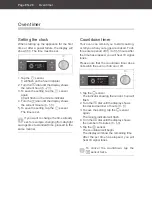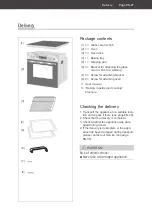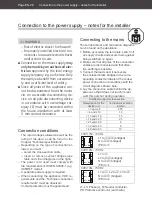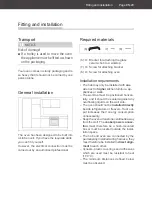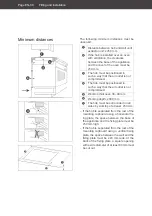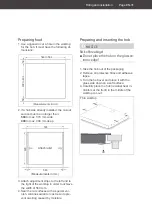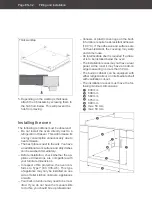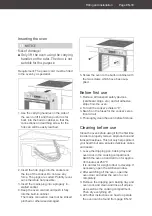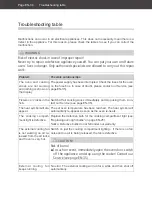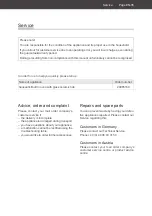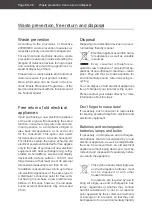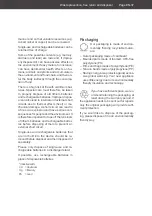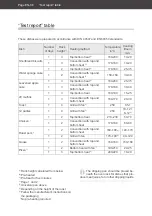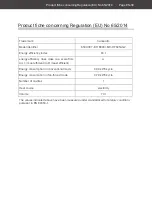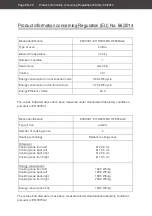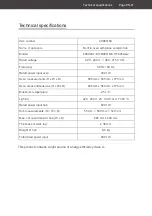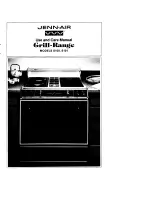
Fitting and installation
Page EN-33
Inserting the oven
NOTICE
Risk of damage!
■
Only lift the oven using the carrying
handles on the sides. The door is not
suitable for this purpose.
Requirement: The power cord must be fitted
to the oven by a specialist.
1. Use the carrying handles on the side of
the oven to lift it and then push it as far
back into the built-in cabinet so that the
connections and earthing screw for the
hob can still be easily reached.
2. Insert the hob plugs into the sockets on
the top of the cooker. Do not use any
force. The plugs are coded. Polarity rever-
sal is therefore not possible.
3. Insert the mains plug into a properly in-
stalled socket
4. Keep the oven centred and push it fully
into the built-in cabinet.
The mains connection must not be kinked,
pinched or otherwise damaged.
5. Screw the oven to the built-in cabinet with
the two screws which have been sup-
plied.
Before first use
1. Remove all transport safety devices
(cardboard strips, etc.) and all adhesive
strips from the oven.
2. Turn all the cooker’s dials to “0”.
3. Switch on the fuses for the cooker’s elec-
trical circuit.
4. Thoroughly clean the oven before first use.
Cleaning before use
Clean the oven before using it for the first time
in order to properly remove all production and
transport residues. This not only helps protect
your health but also ensures delicious cakes
and roasts.
1. Leave the dripping pan, baking tray and
oven rack in the cooking compartment.
Switch the oven on and let it run for approx.
30 minutes at 250 °C.
It is normal for a slight odour to develop. If
necessary, open the kitchen window.
2. After switching off the oven, open the
oven door and allow the oven to cool
completely.
3. Remove the dripping pan, baking tray and
oven rack and clean and rinse off all piec-
es as well as the cooking compartment.
Then dry everything off.
4. All further instructions on how to operate
the oven can be found from page EN-12.

